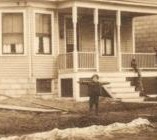 Many new and valuable family history resources are added to the Internet every day. That’s why I occasionally do an online search of the street addresses profiled on wikiHomePages, a website where family members, historians and others can create house histories of homes using old photos taken in and around the address. What I’m looking for is any fresh information I can use to update my “HomePages.” Most of the time there’s nothing new. Most of the time.
Many new and valuable family history resources are added to the Internet every day. That’s why I occasionally do an online search of the street addresses profiled on wikiHomePages, a website where family members, historians and others can create house histories of homes using old photos taken in and around the address. What I’m looking for is any fresh information I can use to update my “HomePages.” Most of the time there’s nothing new. Most of the time.
A few years ago, I received a check for $284.40 from the state of California after entering my 1974 apartment address on their unclaimed property website. The found money came from a long forgotten insurance policy.
It took 36 long years to reunite me and my money, but I’m not complaining. I was happy to have it, even though I knew I had probably used up my share of amazing-discoveries-made-while-checking-old-addresses-online. But then another “lost and found” incident occurred recently that proved to be more rewarding and valuable than found money.
A woman named Patty in Delaware posted an inquiry on the Ancestry.com message board seeking information about her 19th century Irish immigrant ancestors. Their surname was Kennedy and they first settled in Newfoundland, Canada. After living there a number of years, one of the families immigrated to South Amboy, New Jersey in the early 1890s. Patty posted her request in April of 2012.
Posting on a genealogy message board is the digital equivalent of putting a message in a bottle and tossing it in the sea, fingers crossed. Some posts date to the 1990s and are still waiting for a response. But Patty got lucky. And so did I. I just didn’t know it at the time.
In October 2013, a year and a half after posting her inquiry, someone reached into that sea of digital messages, grabbed Patty’s bottle and opened it. Here is the reply from Rose in Virginia.
Good Morning,
Not sure if you are still active on this site but I have recently come into possession of a New Testament short bible Army and Navy edition. Inside the front cover is information hand written about the person who may have owned this bible. The address is listed as 157 Augusta St, South Amboy NJ. The last name is Kennedy. I can’t make out what comes before the last name – could be a rank or some type of initials. It also says – St. Mary’s Catholic School. The date is Oct 3, 1919. I am wondering if this might be a relative of yours. You can email me if you like and I will send you a picture of the inside cover.
I’m thinking if it was my family I would like to have this.
Sincerely,
Rose D.
Va.

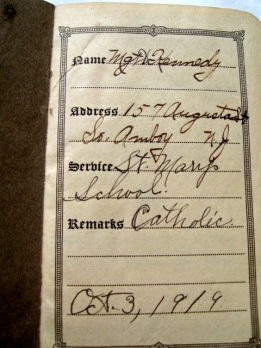
If that was the end of the story, it would still be a good example of the helpful connections that can be made on a genealogy message board. But the story didn’t end there. Far from it. It still had thousands of miles to go.
Last month, as part of my periodic check of the wikiHomePages addresses, I did an online search of my father’s childhood address, “157 Augusta Street, South Amboy, NJ.” Something new popped up: Rose’s response to Patty’s message board request.
I quickly posted a note on the board saying my father’s last name was Kennedy and that he and his family lived at that address in 1919. I was certain it was my father’s bible. And while excited about the prospect of recovering a long lost family heirloom, I was also aware of the possibility Patty and Rose may never re-visit the board and see my post.
As the days passed, I thought about alternate ways to contact them. I could try calling them on the phone. Afterall, how many women named Rose could there be in Virginia? How many Pattys in Delaware? No. I could see that Plan B was not a viable option. But then on the seventh day my anxiety rested, after an intervention of biblical proportions you might say.
That was the day I received an email from Rose. She had seen my post and offered to send the bible to me in California. How very gracious of her. Rose wouldn’t even let me reimburse her for the cost of shipping. She was just so very happy to play a role in returning the bible to my family. The world would be a much brighter place with more people like Rose.
1919 to 2014 is a long, long time. If only the little bible could talk and tell us where it’s been all these years. Rose received it as a gift from her friend Sheila, who was given it 20 years ago by a superior officer while she was in the Army. Beyond that I have no idea of its travels. But I did discover the name of its first owner. And it’s not my father.
I received the bible last week and it’s in great condition; I should look so good at 94 years of age. All the handwriting is clear and easy to read, except for the first name or initials on the inscription. The first three letters look like “Mgt.” My father’s given name was Arthur. No way I can twist Mgt into Arthur. However, he did have a sister Margaret.
 Mgt could be an abbreviation for Margaret. But there is something else between Mgt and Kennedy. Two separate lines at the top join at the bottom to form a “V.”
Mgt could be an abbreviation for Margaret. But there is something else between Mgt and Kennedy. Two separate lines at the top join at the bottom to form a “V.”
Margaret is buried near my father in New Jersey. A photo I took years ago of her tombstone shows a “V” as her middle initial. But what clinches it for me is the date of the inscription, October 3, 1919. Margaret was born on October 2, 1906. The little holy book was likely a present for her 13th birthday. Makes sense to me. MgtV Kennedy is Margaret V. Kennedy. And just as Rose wanted to return the bible to its rightful owner, so do I.
My aunt Margaret married Frederick Meserole in 1934 and lived in Brooklyn. They had one child, Claire, born in 1937. Her married name was Claire Brown. I haven’t seen Claire in over 40 years and need your help locating her.
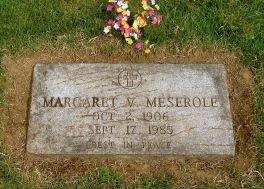

If you know Claire Brown, maiden name Meserole, please contact me at whpcl@earthlink.net. The story of my aunt’s lost bible won’t have a complete and proper ending until it is returned to her daughter Claire. In the meantime, I’ll take good care of the little book, just as Rose and Sheila and names unknown have looked after it for over 94 years.

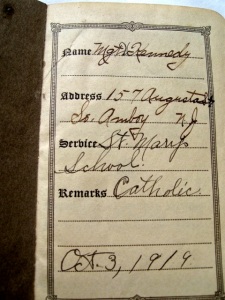

 Many new and valuable family history resources are added to the Internet every day. That’s why I occasionally do an online search of the street addresses profiled on
Many new and valuable family history resources are added to the Internet every day. That’s why I occasionally do an online search of the street addresses profiled on 

 Mgt could be an abbreviation for Margaret. But there is something else between Mgt and Kennedy. Two separate lines at the top join at the bottom to form a “V.”
Mgt could be an abbreviation for Margaret. But there is something else between Mgt and Kennedy. Two separate lines at the top join at the bottom to form a “V.”

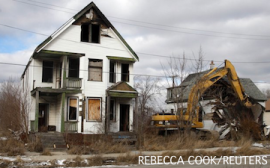
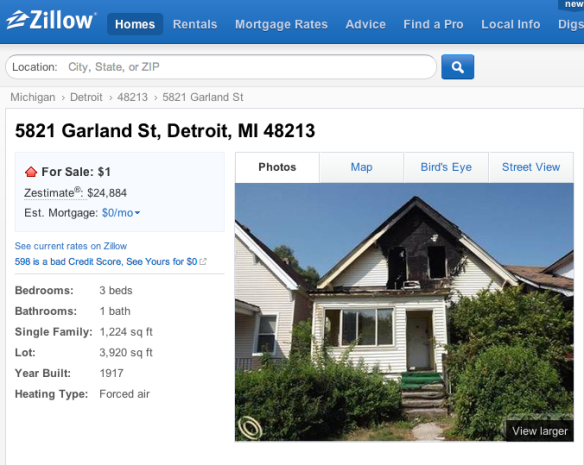
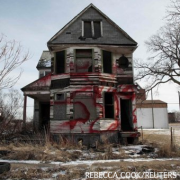
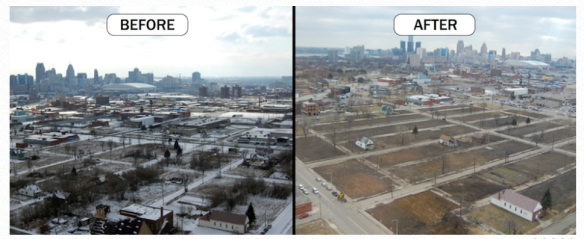
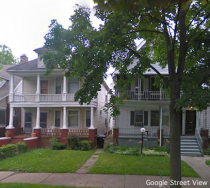

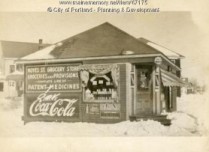 In 1924, every taxable property in the city of Portland, Maine, was reassessed, photographed and documented. The records were then bound into 131 books containing approximately 30,000 pages and stored at City Hall. And there they sat until recently when this remarkable, 88-year-old, newly digitized collection was made available to anyone with access to the Internet.
In 1924, every taxable property in the city of Portland, Maine, was reassessed, photographed and documented. The records were then bound into 131 books containing approximately 30,000 pages and stored at City Hall. And there they sat until recently when this remarkable, 88-year-old, newly digitized collection was made available to anyone with access to the Internet.
 If the Portland collection consisted solely of photos, it would still be great, if not unique. New York City also shares old tax photos with the public, as does Seattle. But Portland’s inclusion of the reassessment documents online puts the city in a class of its own.
If the Portland collection consisted solely of photos, it would still be great, if not unique. New York City also shares old tax photos with the public, as does Seattle. But Portland’s inclusion of the reassessment documents online puts the city in a class of its own.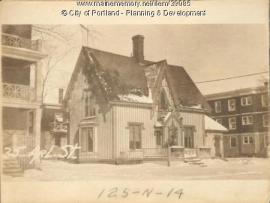

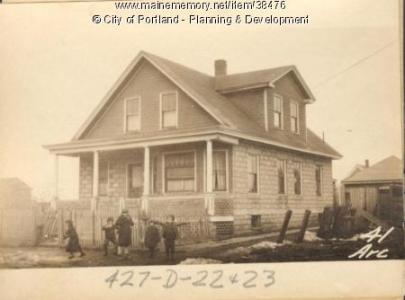 It showed five kids of varying ages playing in front of 41 Arcadia Street. The tax form revealed that the home belonged to Carmela Cipriano. Cross-referencing her name with the 1920 U.S. Census showed that she and her husband, Antonio Cipriano, a laborer on the railroad, lived on Arcadia Street in 1920. The Ciprianos were Italian immigrants and had seven children by 1920, four girls and three boys. I presume five of them are the kids we see in the 1924 photo.
It showed five kids of varying ages playing in front of 41 Arcadia Street. The tax form revealed that the home belonged to Carmela Cipriano. Cross-referencing her name with the 1920 U.S. Census showed that she and her husband, Antonio Cipriano, a laborer on the railroad, lived on Arcadia Street in 1920. The Ciprianos were Italian immigrants and had seven children by 1920, four girls and three boys. I presume five of them are the kids we see in the 1924 photo.